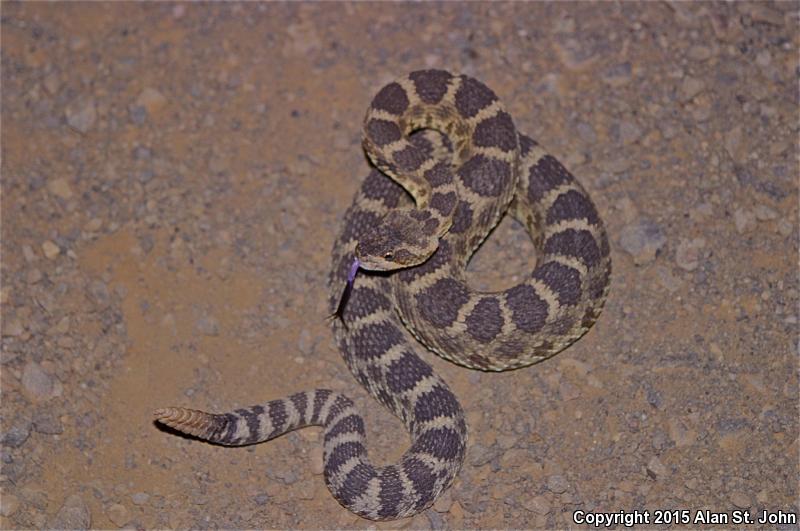Western Rattlesnake (Crotalus oreganus)
Created: February 25th, 2015 - 05:11 PM
Last Modified: February 26th, 2015 - 05:31 PM Entered by: Alan St. John
Record 216585
Last Modified: February 26th, 2015 - 05:31 PM Entered by: Alan St. John
Record 216585
|
Country: United States |
State: Oregon |
County: Crook County |
Time: 2010-07-21 21:00:00 |
|
|
Qty: 1 |
Age: Adult |
Sex: -- |
Method: Road cruising |
Habitat: sagebrush/juniper association in rocky canyon, near riparian zone |
|
Body Temperature: ----- |
Air Temperature: 75.00F |
Ground Temperature: ----- |
Humidity: ----- |
|
|
Sky Conditions: Clear |
Moon Phase: ----- |
Elevation: 4000.00ft |
Barometric Pressure: ----- |
|
Notes
On a warm summer evening at dusk, this specimen was found crossing a gravel road in the Bear Creek drainage, east of Bend. In this area of Oregon where the open sagebrush country of the Great Basin meets the forested Blue Mountains, all rattlesnakes have a blended mixture of oreganus and lutosus characteristics. The 50 to 75 mile wide zone of intergradation between the two subspecies runs eastward from the Bend area for about 300 miles to the Snake River near Baker City.
Vouchers



Comments
Thanks for the kind words. Yeah, for what it's worth, I wanted to clarify this because there have been proposals to elevate oreganus and lutosus as separate full species, based on mtDNA analysis. I think that would be bogus, considering the obvious evidence of a 300-mile-long intergrade zone in Oregon. They're both merely geographic subspecific variations of the same kind of rattlesnake. And actually, there's also evidence of a similar intergrade zone in central Idaho's Salmon River Canyon where the ranges of oreganus and viridis meet----which are of course currently considered different species after a reclassification several years ago.
Nicely done explanation!
Very cool record. Sweet looking snake as well.